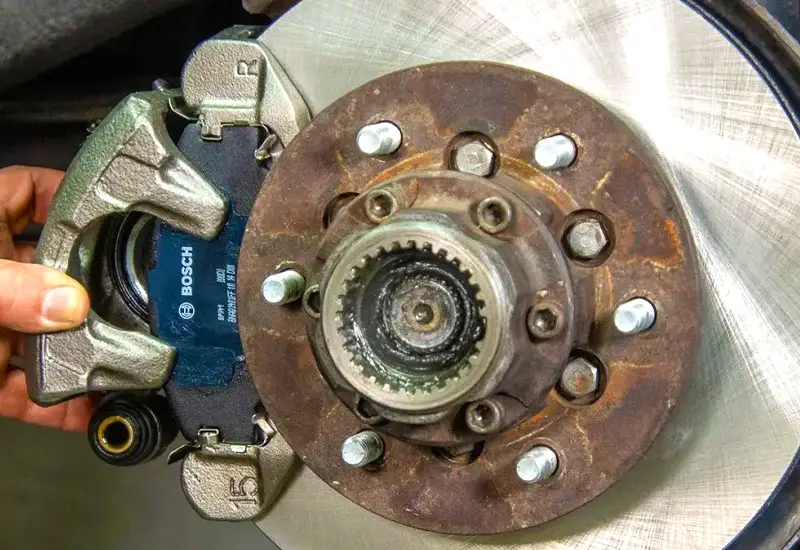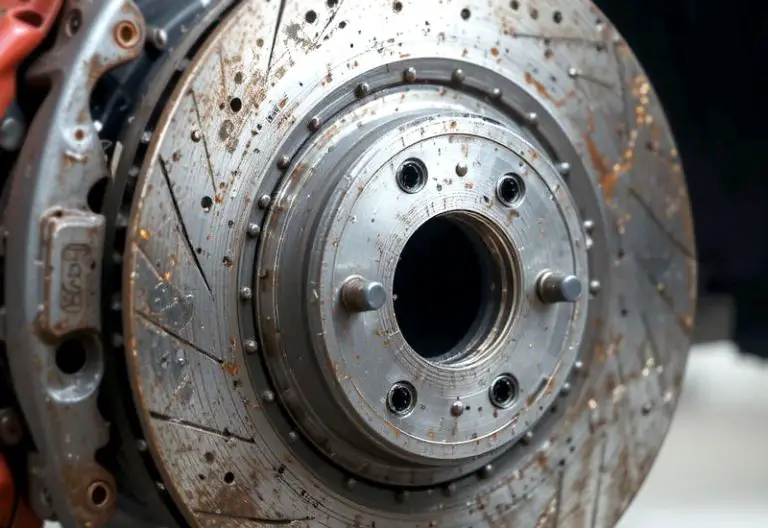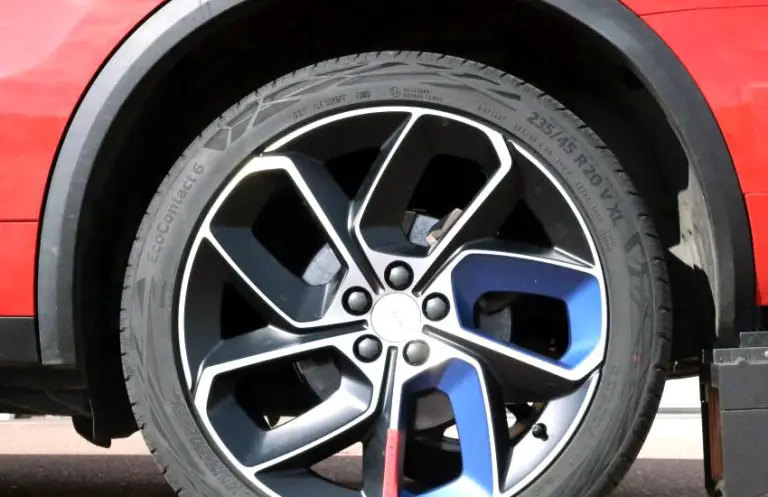When it comes to car maintenance, especially something as crucial as the braking system, it’s important to ensure every component works in harmony. One common question that car owners often ask is whether they can mix and match brake pads and rotors.
This is a significant query because the braking system plays a key role in your car’s safety. Understanding whether or not mixing and matching these parts can compromise performance or even cause damage is vital for making informed decisions when it’s time to replace these essential components.
In this blog post, we’ll dive deep into the question of mixing and matching brake pads and rotors. We’ll explore the different types of brake pads and rotors, the risks involved, and provide some tips to help you make the best choice for your vehicle’s braking system. So, let’s get started by understanding the two main components: brake pads and rotors.

Understanding Brake Pads and Rotors
Before we explore the possibility of mixing and matching brake pads and rotors, it’s important to understand what these components are, how they work, and why they are essential for your car’s braking system.
What Are Brake Pads?
Brake pads are one of the most important components of the braking system. Their main function is to create friction against the brake rotor, which ultimately slows down or stops your vehicle. The brake pad is made of a friction material, which can vary in composition depending on the type of brake pad you choose. When the brake pedal is pressed, hydraulic pressure from the master cylinder forces the brake pads against the rotors, generating friction to reduce speed.
There are several types of brake pads, including:
- Organic Pads: Made from natural materials like rubber, carbon compounds, and other fibers, these pads are quiet and gentle on the rotors, but they tend to wear out faster.
- Semi-Metallic Pads: These contain a mix of metal fibers and other materials. They offer better performance and durability, but can create more noise and wear out the rotors more quickly.
- Ceramic Pads: Made from ceramic fibers and other materials, these pads are durable, quiet, and provide great performance. They tend to be more expensive than organic or semi-metallic pads but are preferred by many for their overall reliability.
What Are Brake Rotors?
Brake rotors, also known as discs, are the large metal components that the brake pads press against when you apply the brakes. The rotors are typically made of cast iron, though high-performance rotors may be made of carbon composites or other materials. They work in tandem with the brake pads to slow down or stop your vehicle.
Rotors come in various designs, including:
- Smooth Rotors: These are the most common type of rotors found in everyday vehicles. They are simple, smooth discs that provide effective braking performance.
- Slotted Rotors: These rotors have grooves (slots) cut into the surface to improve braking performance by venting gases and reducing heat buildup. They are typically used in high-performance or heavy-duty vehicles.
- Drilled Rotors: Drilled rotors have holes drilled into the surface to improve cooling and reduce brake fade. These are often seen in racing and high-performance vehicles.
The performance of the brake rotors depends on their material, design, and condition. As rotors wear down over time, they may become warped or develop grooves, which can negatively impact the braking performance and may require resurfacing or replacement.
How Brake Pads and Rotors Work Together
The brake pads and rotors work together to create the friction necessary to stop your vehicle. When you apply pressure to the brake pedal, the brake pads clamp down on the rotors, generating friction that slows the vehicle down. This process generates a lot of heat, which is why both brake pads and rotors need to be made from durable materials that can handle the heat and pressure.
The efficiency of this process is affected by the type of brake pads and rotors you use. For example, ceramic brake pads may be quieter and more durable than organic pads, but they might not perform as well under extreme conditions like semi-metallic pads. Similarly, slotted rotors may provide better cooling and performance in high-performance driving situations, but they may cause increased wear on certain types of brake pads.
Can You Mix and Match Brake Pads and Rotors?
Now that we understand the role of brake pads and rotors, let’s dive into the main question: can you mix and match brake pads and rotors? The answer to this question isn’t simple, as it depends on various factors, including the type of driving you do, the specific components you are working with, and how well the parts are designed to work together. Let’s break it down:
Potential Risks of Mixing Brake Pads and Rotors
While it’s technically possible to mix and match brake pads and rotors, doing so can have potential risks. Here are a few things to consider:
Increased Wear and Tear: Different types of brake pads and rotors are designed to work together. When you mix components that weren’t designed to be used together, you might cause increased wear on both the pads and the rotors. For instance, using high-performance brake pads with regular rotors could lead to faster wear and potentially reduce the lifespan of the parts.
Performance Issues: Brake pads and rotors need to create the right balance of friction and heat management to ensure optimal braking performance. If you use incompatible parts, you might experience poor braking performance, such as reduced stopping power or increased brake fade (when brakes lose effectiveness due to excessive heat).
Noise and Vibration: When mixing brake pads and rotors, you may experience more noise and vibration during braking. This is because the materials of the pads and rotors might not interact as smoothly as those that are designed to work together. This can lead to squeaking, squealing, or even vibrations that make your braking experience less comfortable and less effective.
Safety Concerns: Above all, mixing and matching brake pads and rotors can be a safety risk. A poorly matched braking system might not perform as efficiently in emergency situations, putting you at risk of accidents. Since the braking system is one of the most important safety features in your vehicle, it’s essential to ensure that the components work well together.
When It Might Be Safe to Mix and Match
In certain situations, mixing and matching brake pads and rotors might be acceptable. For instance, if your vehicle uses aftermarket parts, you might be able to combine parts from different manufacturers as long as the specifications are compatible. However, even in these cases, it’s important to ensure that the pad and rotor materials are compatible in terms of their heat management properties and friction levels.
If you’re replacing one component (either the pads or the rotors) and you can’t find an exact match, it’s better to choose components from the same product line or manufacturer. This ensures that the parts are designed to work together and maintain the proper balance of performance and safety.
It’s also important to consult with a mechanic or brake specialist when you’re mixing and matching components. A professional can help ensure that the parts you choose are compatible and can help you avoid the risks associated with incompatible brake pads and rotors.
Choosing the Right Brake Pads and Rotors
If you’re considering replacing your brake pads or rotors, it’s crucial to choose the right components that will work well together. Here are some tips for making the right choice:
Consider Your Driving Style: Your driving habits will influence the type of brake pads and rotors that are best suited for your vehicle. For instance, if you do a lot of high-performance driving or have a heavy vehicle, you may want to opt for slotted or drilled rotors paired with high-performance pads. On the other hand, if you mostly drive in urban areas and do not require extreme braking performance, regular pads and smooth rotors may suffice.
Stick to the Same Product Line: If you are replacing both the pads and rotors, it’s generally a good idea to choose parts from the same product line or manufacturer. This ensures compatibility and can help avoid performance issues.
Consult a Mechanic: If you’re unsure about mixing and matching brake pads and rotors, it’s always a good idea to consult a professional mechanic. They can recommend the best combination of parts based on your vehicle’s make, model, and driving habits.
Check Compatibility: Before purchasing replacement pads or rotors, make sure they are designed to be compatible with your vehicle’s braking system. This includes checking the size, material, and design of both the pads and rotors. Using components that aren’t compatible with your car can lead to safety issues and performance problems.
I hope this guide has provided you with a clear understanding of whether or not you can mix and match brake pads and rotors. While it’s possible in certain situations, it’s essential to carefully consider the risks and consult with professionals to ensure you’re making the right decision for your vehicle’s safety and performance.
Are These Questions in Your Mind?
Is it safe to mix and match brake pads and rotors?
No, mixing and matching brake pads and rotors can lead to increased wear, performance issues, and safety risks. It’s best to use components designed to work together.
Can you use ceramic brake pads with semi-metallic rotors?
While you can technically use different types of pads and rotors, it’s best to pair ceramic pads with rotors designed for them to ensure optimal performance and avoid premature wear.
Do I need to replace both brake pads and rotors at the same time?
It’s not always necessary to replace both components at the same time, but if one part is significantly worn or damaged, it’s recommended to replace both for consistent performance.
Can I use aftermarket brake pads with OEM rotors?
Yes, you can use aftermarket brake pads with OEM rotors, but make sure the pads are designed to be compatible with your vehicle’s specifications for safety and performance.
Is it important to match the brand of brake pads and rotors?
Matching the brand can ensure compatibility, as manufacturers design their parts to work together for optimal performance and safety.
Do I need special brake pads for high-performance rotors?
Yes, high-performance rotors require brake pads that can handle more heat and friction, such as semi-metallic or ceramic pads designed for high-performance applications.
Can I mix different types of rotors on the same axle?
It’s not recommended to use different types of rotors on the same axle because it could affect the braking balance, leading to uneven braking performance.
Is it necessary to replace the brake rotors when replacing pads?
It’s not necessary, but it’s a good idea to check the condition of the rotors when replacing the pads. If they’re worn or damaged, it’s best to replace them.
Can mismatched brake pads and rotors cause brake failure?
Yes, mismatched components can cause brake failure due to improper friction, overheating, and excessive wear.
Do I have to buy brake pads and rotors from the same store?
No, as long as you check the compatibility of the parts, you can purchase them from different stores. However, buying from the same retailer might ensure you get parts designed to work together.


